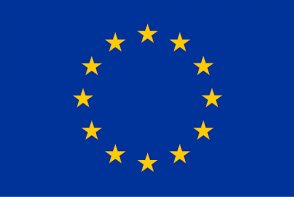André Maia Pereira is originally from Curitiba, Brazil. He holds a degree in Transportation and Vehicle Engineering at Budapest University of Technology and Economics, and received a M.S. double degree in Intelligent Transport Systems, from Linkoping University and the Czech Technical University (CTU). His participation on the European project Managing Automated Vehicles Enhances Network (MAVEN) inspired him to pursue a Ph.D. research on Transportation Systems and Technology at CTU. André is part of the Czech Technical University (CTU) team participating in nuMIDAS.
1. Please tell us about the Faculty of Transportation Sciences of the Czech Technical University in Prague and how your role in your team plays in nuMIDAS?
The Czech Technical University in Prague (CTU) was established in 1707 and is one of the oldest institutes of technology in Europe with 8 faculties. At the Faculty of Transportation Sciences, we have project-focused education in four specific areas: Intelligent Transportation Systems (ITS), air transportation and pilot training, logistics and transportation management, and Smart Cities. Since 2021 I am a member of the Laboratory of Applied Mathematics in Transport and Logistics (LAMbDA), where we support partners and students on modelling, optimisation, and analysis. The main goal of the LAMbDA laboratory is to create a competence centre that will build knowledge in the field of mathematical modelling and the application of mathematical tools for transport and logistics tasks. I have been exploring Cooperative-ITS solutions, data analysis, traffic modelling and simulation, and integration of cooperative automated vehicles into the roadside infrastructure.
In nuMIDAS, I cooperate on the research of the literature as well as on the suggestion of methodologies, models and tools. I also have an active role in documentation and proposing new concepts. In this way, I aim to collaborate on understanding the current situation in the mobility sector, and solving its problems by imagining the future and ideal situations, all the while considering constrained resources and other limitations.
2. What are the main challenges and opportunities you currently see in mobility regarding the use of data?
Innovations in the mobility sector are happening at a fast pace, and the emergence of digitalisation not only brings new ways in which data are being generated, collected, stored, and exchanged, but also supports new types of policies, services, and solutions. In general, digital platforms facilitate the flow of information and improve the usage of resources, but that can lead to a disruption in the sector and also in a change of citizen’s behaviour.
As main challenges, we can point out: the interoperability of systems, privacy, cyber-security, open data and open platforms, proper infrastructure, and slower legislation against faster innovation. In order to build an efficient integrated urban transport system, cities will have to adjust their policies and legislation while services adapt their business models and processes. However, we can also see opportunities in the sector, such as: data standardisation, promotion of open data and open platforms, and the development of tools to support sustainability as well as urban space management and impact assessment. Industry 4.0 and artificial intelligence offer new opportunities that are usually not explored by existing mobility tools.
3. As nuMIDAS WP2 leaders, what are the biggest lessons and insights you have obtained from the project so far?
I believe that the core of our acquired knowledge is that in order to help stakeholders achieving their goals, we must shift from the tools-oriented perspective to a service-oriented perspective. Usually, cities have common problems but caused by different reasons, which may be influenced by common factors. Instead of having a tool (or a set of tools) that may be powerful on their capabilities, the final goal is always to solve real world challenges. That means establishing methodologies that solve specific real-world problems by having as inputs a well-defined set of causes, influencing factors, and a set of meaningful KPIs for the decision-making process.

Interestingly, such approach may require a combination of different tools, in which the focus lies on the interoperability of these tools and data sources, either by data standards or business agreements. These standards and agreements are a key part in the so-called co-opetition (cooperative competition), where competitors find profitable to cooperate. Since our motivation on traditional tools focused on the management or planning of infrastructure investments, to those modelling traffic and impact assessment of traffic control measures, we are already looking towards pricing measures, travel behaviour, and service operations modelling. Yet, the integration has still a lot of obstacles, since customisation of goals, user experience, regulation, and agreements between stakeholders are still challenges to be addressed.
4. How do you see nuMIDAS contributing or complementing other mobility initiatives being developed across Europe?
Existing tools and policy instruments must follow the innovations in mobility. This is important because transportation planning, design and operations are connected to the other functions of the cities, which is the main idea of smart cities. Therefore, new data sources are necessary, for example: geo-located data, cell phone data and the Internet of Things (where objects can communicate directly among each other and also with the Internet). For instance, Horizon 2020’s project Molière aims at building “the world’s best open data commons for mobility services”.
Furthermore, tools must estimate and present the impact of policies while providing services. This should support a new perspective that shifts our attention from “mobility” to “accessibility” with the focus on sustainability and liveability. For instance, the CIVITAS initiative is “a network of cities, for cities, dedicated to sustainable urban mobility” that provides an online database of over 200 tools and methods to help cities on the right tools to use in according to the context. Upon such work, nuMIDAS contributes by finding the white spots of current tools, and acts as a toolkit that complements different specific tools in order to solve real-word problems and support the decision-making process.




